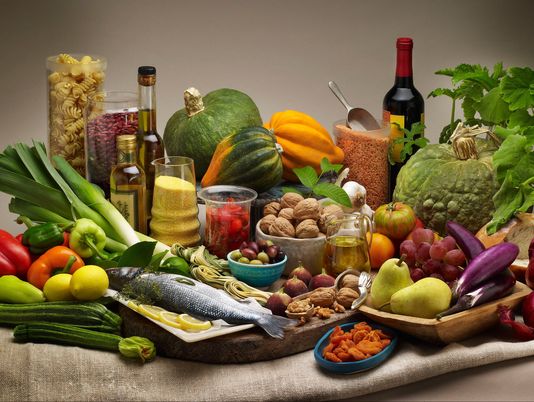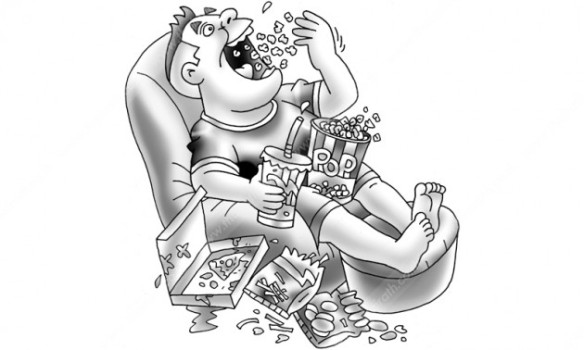 วารสารวิชาการ “แพทย์ผู้เชี่ยวชาญด้านโรคชรา วิทยาศาสตร์ ชีวภาพ และวิทยาศาสตร์การแพทย์” รายงานว่า มีการศึกษาพบว่าอาหาร แบบของชาวเมดิเตอร์เรเนียนจะช่วยป้องกันโรคความดันโลหิต โรคเบาหวานชนิดที่ 2 โรคข้ออักเสบ และโรคหัวใจและหลอดเลือดได้บ้าง
วารสารวิชาการ “แพทย์ผู้เชี่ยวชาญด้านโรคชรา วิทยาศาสตร์ ชีวภาพ และวิทยาศาสตร์การแพทย์” รายงานว่า มีการศึกษาพบว่าอาหาร แบบของชาวเมดิเตอร์เรเนียนจะช่วยป้องกันโรคความดันโลหิต โรคเบาหวานชนิดที่ 2 โรคข้ออักเสบ และโรคหัวใจและหลอดเลือดได้บ้าง
รายงานเปิดเผยรายละเอียดว่า อาหารแบบนี้ โดยเฉพาะช่วยลดอาการเลือดมีกรดยูริกเกิน เพราะการมีกรดยูริกสูงในเลือดเป็นสาเหตุให้เป็นโรคลงพุง ความดันโลหิตสูง โรคเบาหวานชนิดที่ 2 โรคเกาต์ โรคหัวใจ และหลอดเลือด
อาหารของชาวเมดิเตอร์เรเนียนประกอบด้วย ผัก ผลไม้ น้ำมันมะกอก ถั่วและข้าวกล้อง ไม้จำพวกมีฝัก เช่น ทองหลาง กระถิน ถั่ว เหล้าไวน์เล็กน้อย นมเนย เป็ด ไก่ ห่านที่เลี้ยงไว้กินเนื้อและกินไข่ เนื้อแดงปริมาณน้อย และครีม ล้วนแต่มีคุณสมบัติของการต่อต้านอนุมูลอิสระ และต้านการอักเสบทั้งสิ้น
การศึกษาครั้งนี้มุ่งหาความสัมพันธ์ของอาหารแบบเมดิเตอร์เรเนียนกับผู้สูงอายุและความเสี่ยงกับอาการเลือดมีกรดยูริกเกินโดยตรง.
ที่มา : ไทยรัฐ 25 เมษายน 2556
.
Related Article :
.

Credit : http://www.usatoday.com
Experts Examine Mediterranean Diet’s Health Effects for Older Adults
Apr. 18, 2013 — According to a study published in the Journals of Gerontology Series A: Biological Sciences and Medical Sciences, a baseline adherence to a Mediterranean diet (MeDiet) is associated with a lower risk of hyperuricemia, defined as a serum uric acid (SUA) concentration higher than 7mg/dl in men and higher than 6mg/dl in women.
Hyperuricemia has been associated with metabolic syndrome, hypertension, type 2 diabetes mellitus, chronic kidney disease, gout, and cardiovascular morbidity and mortality. The MeDiet is characterized by a high consumption of fruits, vegetables, legumes, olive oil, nuts, and whole grain; a moderate consumption of wine, dairy products, and poultry, and a low consumption of red meat, sweet beverages, creams, and pastries. Due to its antioxidant and anti-inflammatory properties, the MeDiet might play a role in decreasing SUA concentrations.
Conducted by Marta Guasch-Ferré and 11 others, this study is the first to analyze the relationship between adherence to a MeDiet in older adults and the risk of hyperuricemia. The five-year study looks at 7,447 participants assigned to one of three intervention diets (two MeDiets enriched with extra virgin olive oil or mixed nuts, or a control low-fat diet). Participants were men aged 55 to 80 years and women aged 60 to 80 years who were free of cardiovascular disease but who had either type 2 diabetes mellitus or were at risk of coronary heart disease.
The findings below demonstrate the positive health effects of a MeDiet in older adults:
- Rates of reversion were higher among hyperuricemic participants at baseline who had greater adherence to the MeDiet.
- Consuming less than one serving a day of red meat compared with higher intake is associated with 23 percent reduced risk of hyperuricemia.
- Consuming fish and seafood increased the prevalence of hyperuricemia.
- Drinking more than seven glasses of wine per week increased the prevalence of hyperuricemia.
- Consuming legumes and sofrito sauce reduced the prevalence of hyperuricemia.
- Reversion of hyperuricemia was achieved by adherence to the MeDiet alone, without weight loss or changes to physical activity.
Story Source:
The above story is reprinted from materials provided by The Gerontological Society of America.
Journal Reference:
- Marta Guasch-Ferré, Mònica Bulló, Nancy Babio, Miguel A. Martínez-González, Ramon Estruch, María-Isabel Covas, Julia Wärnberg, Fernando Arós, José Lapetra, Lluís Serra-Majem, Josep Basora, And Jordi Salas-Salvadó.Mediterranean Diet and Risk of Hyperuricemia in Elderly Participants at High Cardiovascular Risk.Journals of Gerontology Series A: Biological Sciences and Medical Sciences,, 2013 DOI: 10.1093/gerona/glt028
SOURCE : www.sciencedaily.com


